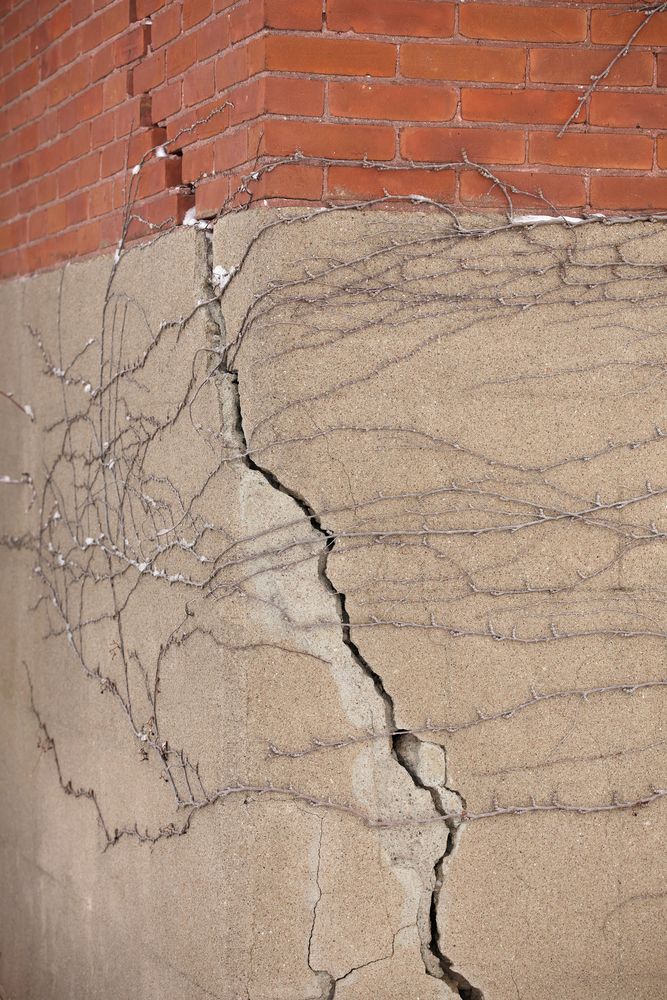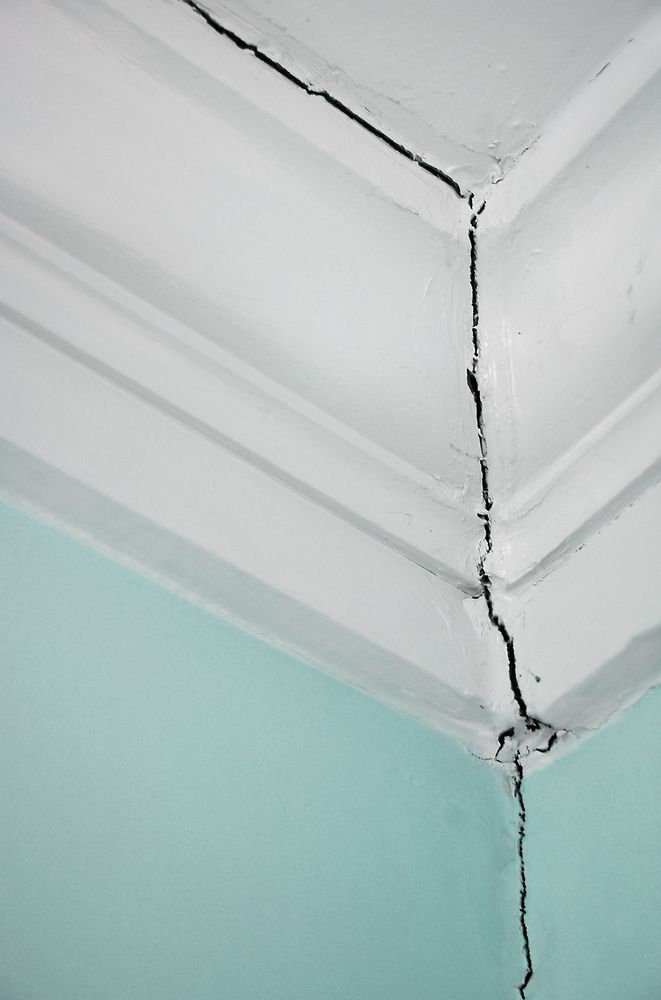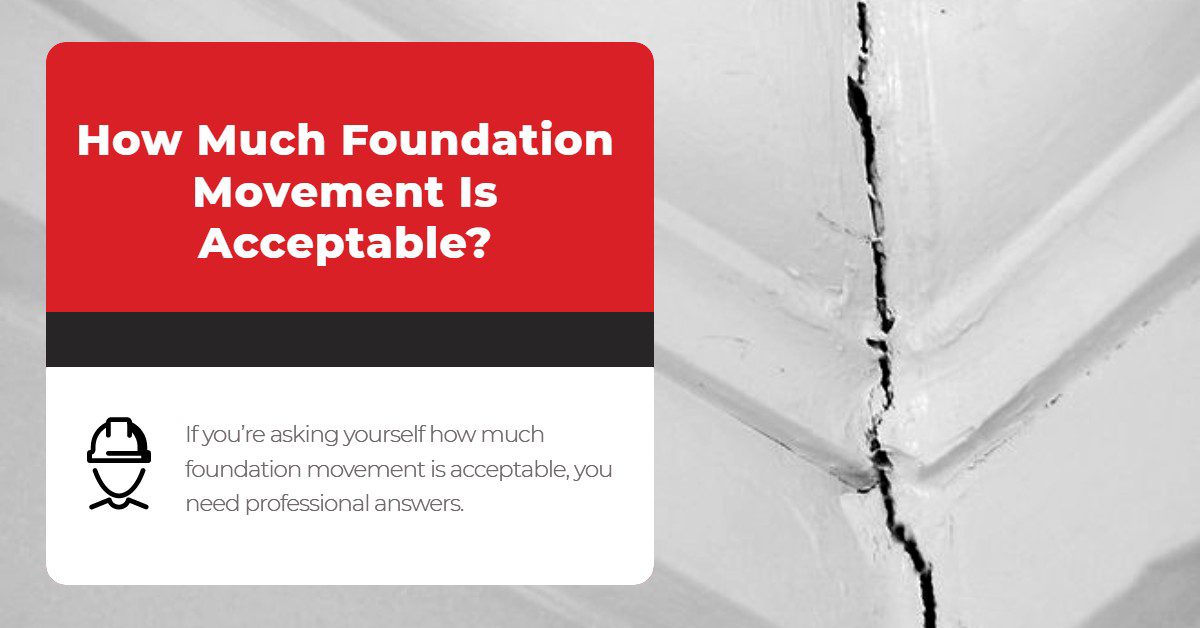If you’re asking yourself how much foundation movement is acceptable, you need professional answers. That’s where this article comes in. Homeowners wondering about foundation movement will find everything they’re looking for, including why foundations move and what experts can do to stop or prevent further damage.
How Much Foundation Movement Is Acceptable?
If your foundation is settling into the soil beneath it, experts consider anything more than 1 inch for every 20 feet as too much. Here’s how professionals determine that.
- 1% for tilt – A tilt of 1% is when your foundation slope exceeds a rise or fall of one inch in a span of 100 inches.
- L/360 for deflection – Deflection measures how far the surface of your foundation slab lies from a hypothetical surface. Deflection is a little harder to describe and calculate.
Other than situations where foundation movement is causing serious issues (such as bowing walls, sticking windows or doors, etc.), there are no written standards on what’s acceptable or not. If foundation repairs can eliminate or reduce your issues, we recommend calling the experts.

Why Do Foundations Move Or Shift?
There are two forms of foundation movement that most homes experience in their lifetime: uniform and differential settlement.
Uniform Settlement
Uniform settlement is when your foundation settles slightly into the ground after it’s first constructed. This movement should be uniform across your entire home. If the settlement starts to become uneven, that’s when you should start to worry.
Differential Settlement
Differential settlement is when different sections of your home (such as your living room or garage) settle at uneven rates. Signs of this include,
- Foundation cracks
- Drywall cracks
- Sticking windows and doors
- Cracked floors
- and more
A few things can cause differential settlement. Some of those include,

- Improperly compacted soil – If builders did not properly compact the soil before they poured your foundation, it could lead to expansion, contraction, consolidation, and erosion.
- Expansive soil – This type of soil grows and shrinks based on how much water saturates the dirt. If the soil swells in one area below your home and shrinks in another, it can cause your foundation to move unevenly.
- Weather changes – Home’s built in areas that experience extreme weather changes are at risk to differential settlement. Droughts can dry the soil under your foundation, causing it to sink into empty pockets or voids. Floods can wash the soil out from underneath your foundation, leading to excessive settlement.
- Extensive digging – If you remove too much soil around your foundation, it can lose its support (this is mainly for basements). If one side of your house loses its support, it could result in differential settlement.
- Earthquakes – Earthquakes can severely move and damage your foundation.
How Can You Repair Foundation Movement?
There are a few different ways experts fix foundation movement.
- Compaction grouting – This is when experts inject fast-setting polyurethane foam into any loose soil underneath your foundation. The foam expands and hardens, forming balls or columns of dense structural supports. Overall, the process compacts the surrounding weak soil and increases the load-bearing capacity.
- Permeation grouting – This is when experts inject cement or a chemical-based grout underneath your foundation. This injection fills any pockets in the dirt and turns granular (weak) soil into a solid mass with increased support capabilities. Permeation grouting is commonly used in coastal regions where the soil is usually sandy or loose.
- Steel push piers – These piers are pushed deep beneath the soil under your foundation until they reach load-bearing strata (soil strong enough to support your home’s weight). Once they reach that soil, hydraulic jacks are attached to the side of your foundation and push down on the piers, using the pressure to lift your home.
- Helical piers – These piers are also used to lift settling foundations and homes. Instead of being pushed into the soil, they are twisted like corkscrews until they reach load-bearing strata.
- Wall plate anchors (for poured concrete block walls) – If you have a basement, and your foundation walls are bowing (the center of your wall is pushing inward), then experts will use wall plate anchors to correct the movement. Wall plate anchors work in three parts: the anchor, the plate, and the threaded steel beam that connects them. The plate is placed inside your bowing wall, while the anchor is placed in a trench in your yard. The steel beam is slipped through your plate, wall, and dirt until it reaches the anchor outside. Once they are connected, the plates are torqued, which pulls the wall outward and corrects the movement.
- Helical tieback anchors – These anchors accomplish the same goal as wall plate anchors. Instead of using a separate outside anchor, the beams are twisted into the dirt from inside your basement like corkscrews. As they twist, they pull your wall back outward. These anchors are useful for homes that have limited space outside their foundation.
- Carbon fiber repair – Experts can use various specialized carbon fiber equipment to correct bowing walls and foundation cracks. Carbon fiber is an extremely strong material and is virtually unbreakable.
Who Can Help You Identify & Correct Foundation Movement?
If you need your foundation inspected and checked for any movement, call Foundation Professionals Of Florida. We service Florida, Georgia, Alabama, Mississippi, Louisiana, Tennessee, Kentucky, North Carolina, South Carolina, Virgin Islands, and the Florida Keys. We also offer basement waterproofing, concrete leveling, and more.

